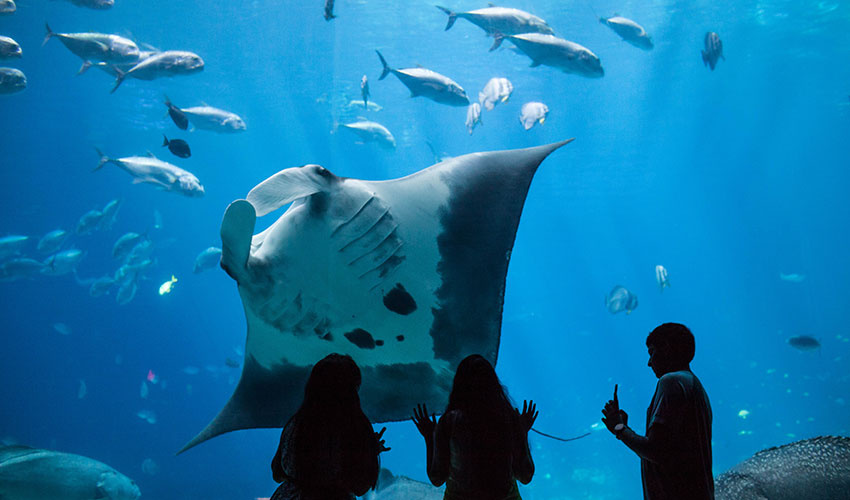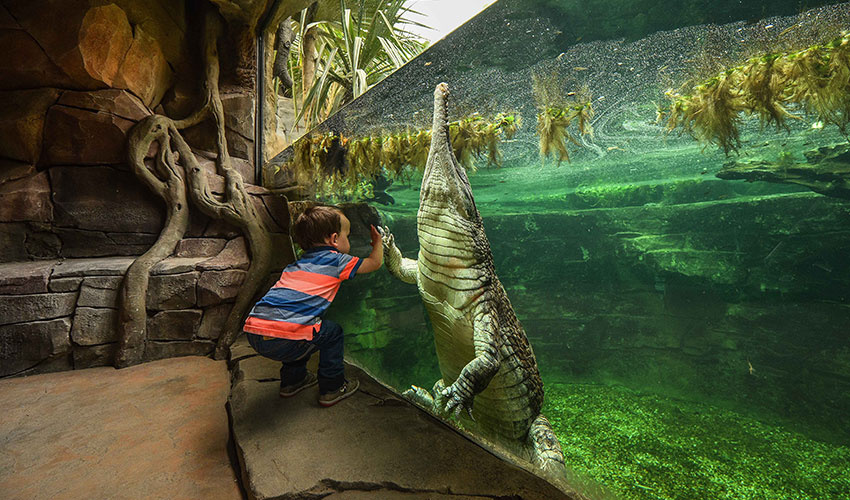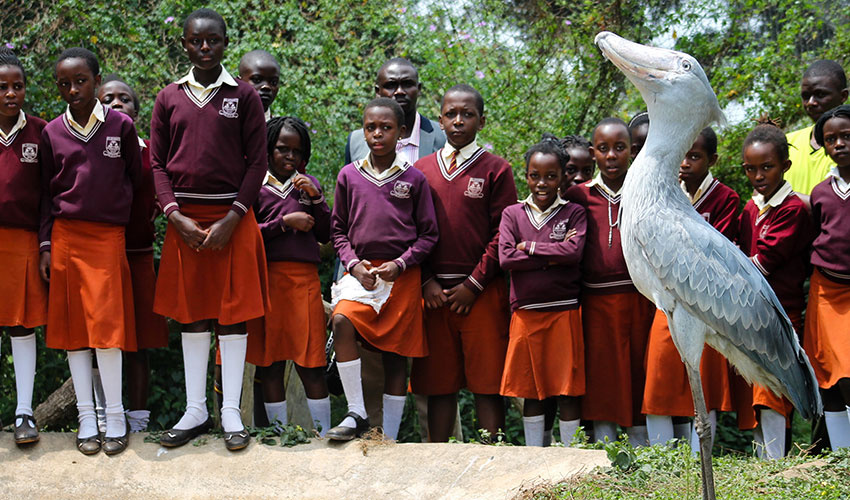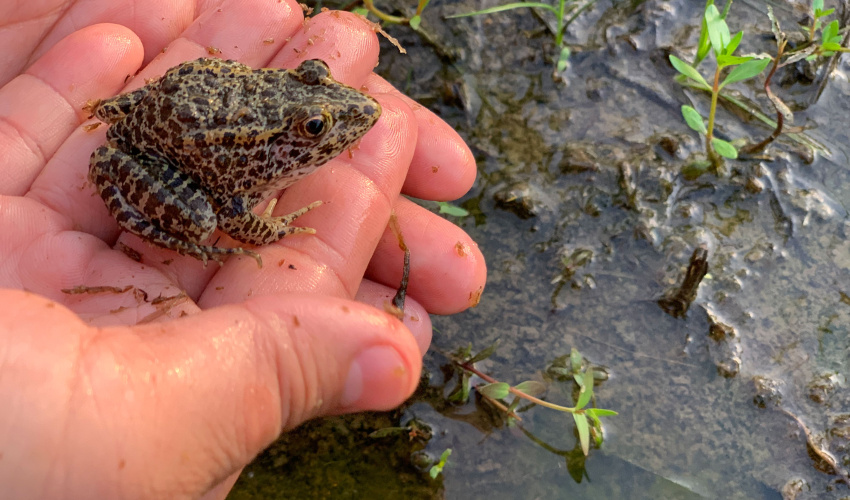Progressive zoos and aquariums must be part of the world’s response to COVID-19
Many zoos and aquariums face challenges as lockdowns mean the loss of vital income from visitors. As the international community looks to stimulate economic recovery whilst addressing other global goals, the love of nature that zoos and aquariums inspire and the ex situ conservation techniques they pioneer have never been more important writes Dr Martín Zordan, CEO of the World Association of Zoos and Aquariums (WAZA), an IUCN Member organisation.

A manta ray (Mobula sp. cf. birostris) surprises visitors to Georgia Aquarium, USA. Researchers study their behaviour in the aquarium to inform field conservation.
Photo: Georgia Aquarium
We will not forget 2020. For decades, even centuries, humans have taken nature for granted. It was only a matter of time before human activity exposed us to another zoonotic pathogen and, given the speed of modern travel, a pandemic was perhaps, tragically, inevitable. Just as with climate change, difficult scenarios we predicted for future generations are happening much earlier. Individuals are responding to these urgent challenges, and our institutions must too. For the progressive community of zoos and aquariums, of which I am proudly part, there is now even more urgency to act.
The World Association of Zoos and Aquariums (WAZA), an IUCN Member since 1949, includes among its own members more than 280 zoos and aquariums from over 50 countries, and 23 national and regional associations. In a normal year we estimate more than 700 million people visit zoos and aquariums worldwide, with many millions following their work online too (the only option during lockdown). With this huge and growing audience, we nurture strong relationships with the wider public. We foster love for animals and advocate for them to have their habitats protected. Where science often struggles to find the words to engage people, zoos and aquariums bridge the gap. To that end, jointly with the International Zoo Educators Association, WAZA has published Social Change for Conservation: The World Zoo and Aquarium Conservation Education Strategy. Inspiring conservation action in the wake of the pandemic is essential if we are to reform humanity’s relationship with the natural world.
In a normal year we estimate more than 700 million people visit zoos and aquariums worldwide. Inspiring conservation action in the wake of the pandemic is essential if we are to reform humanity’s relationship with the natural world.
Alongside ex situ conservation like the breeding of threatened species, every year progressive zoos and aquariums invest hundreds of millions of dollars in field programmes. With other IUCN Members, we are part of the larger puzzle that makes conservation work but, as COVID-19 has shown so clearly, more must be done. So, how does such a complex network come together to level-up our impact?
Put simply, I believe the need is for better connections between the pieces of the puzzle, and this is where initiatives like Reverse the Red fit in. Founded by IUCN, WAZA and our partners, Reverse the Red is a global movement to build cooperation and action that ensures the survival of species and ecosystems. Whether government agencies, NGOs, zoos, aquariums, botanical gardens or parties to multinational agreements, we all have a role to play.
 A young visitor to Chester Zoo in the UK comes face-to-face with Frankie, a Sunda gharial (Tomistoma schlegelii).
Photo: Chester Zoo
A young visitor to Chester Zoo in the UK comes face-to-face with Frankie, a Sunda gharial (Tomistoma schlegelii).
Photo: Chester Zoo
At the heart of the movement is the Assess, Plan, Act methodology, and we need IUCN at every stage. To Assess, the IUCN Red List of Threatened SpeciesTM is our main tool. To Plan, the IUCN Species Survival Commission (IUCN SSC) Conservation Planning Specialist Group has demonstrated how to integrate ecological and social sciences to engage diverse stakeholders with comprehensive conservation strategies. When the time comes to Act, a conservation programme must convene and mobilise those stakeholders to deliver actions, and those actions must be based on the best available tools and practices. IUCN SSC has developed many of them. Through training and other capacity building efforts, WAZA zoos and aquariums are working with IUCN SSC to assist in these three areas; a powerful example of the strength of unions.
Global conservation efforts and indicators are complicated and potentially unachievable without national strategies, goals and metrics.
When the partnership discussed what we need to do differently to reverse current extinction rates, two themes emerged:
- National-scale approach: Global conservation efforts and indicators are complicated and potentially unachievable without national strategies, goals and metrics.
- Representation: Everyone needs to feel included.
In my view, the wounds of colonialism and misogyny must be healed. Nothing can do this more than seeing people everyone can relate to at the centre of the action. This is essential to engage new generations.
Again, WAZA and our members are helping to achieve both. Zoos and aquariums have access to governments, private sector partners, and academia, but also to educators, families, communities, youth groups and grassroots movements. We have yet to harness the full potential of these networks.
 Schoolchildren visiting the Uganda Wildlife Conservation Education Centre learn about the threatened shoebill stork (Balaeniceps rex) and how to conserve its wetland habitat.
Photo: Uganda Wildlife Conservation Education Centre
Schoolchildren visiting the Uganda Wildlife Conservation Education Centre learn about the threatened shoebill stork (Balaeniceps rex) and how to conserve its wetland habitat.
Photo: Uganda Wildlife Conservation Education Centre
In the context of the pandemic, wildlife trade is receiving much more attention. Zoos and aquariums are no stranger to the work of stopping illegal wildlife trade. Through education programmes we encourage people to avoid the consumption of illegal wildlife products and when illegal trade is suspected, the expertise of zoos and aquariums is needed. Our specialists are called upon to differentiate legal from illegal trade, identify species, provide care for confiscated animals and train enforcement agencies. Two recent IUCN Motions led by zoo and aquarium associations aim to further our work on this matter:
- Resolution 57, Law enforcement regarding commercial trade in tigers and tiger parts, led by the European Association of Zoos and Aquaria (EAZA)
- Resolution 65, Engaging the private sector to combat wildlife trafficking, led by the Association of Zoos and Aquariums (AZA)
On a final note, if you are a follower of the Crossroads Blog you know that each comes with a call to action. Mine is to all IUCN Members: we must find a way to foster networks and, given the limited time and resources we have to address our most urgent global challenges, we should pay special attention to national ones. If every nation has strong national conservation networks, supported by an engaged public, the international community has a much stronger base from which to act and achieve our global goals. With the organisation I represent in mind, I invite you all to consider an inclusive approach to these networks; one that brings in the ex situ community (zoos, aquariums, museums, and botanical gardens amongst others).
Given the limited time and resources we have to address our most urgent global challenges, we should pay special attention to national conservation networks and bring in the ex situ community of zoos, aquariums, museums and botanical gardens amongst others.
Recognition of the value of ex situ conservation is growing, for example through Article 9 of the UN Convention on Biological Diversity (CBD). In addition to IUCN SSC guidelines on the use of ex situ management for species conservation, approved in 2014, ex situ is now acknowledged as a valuable tool through Resolution 94, Linking in situ and ex situ efforts to save threatened species. Just as with Article 9, a continuum between in situ and ex situ action is encouraged. Resolution 119, Improving process and action to identify and recover ‘Extinct in the Wild’ species, goes further, and highlights the need for further ex situ measures particularly for those species on the verge of extinction.
 A Critically Endangered dusky gopher froglet (Lithobates sevosus)
Photo: Steve Reichling, Memphis Zoo
A Critically Endangered dusky gopher froglet (Lithobates sevosus)
Photo: Steve Reichling, Memphis Zoo
I hope this cooperation builds. We are all part of the conservation puzzle. To make our recovery from this dreadful pandemic a sustainable one, the ex situ community has distinct tools, skills and expertise that we are glad to and need to share. Like biodiversity, those of us working to protect it need a diverse set of resources and strong networks to thrive.
Languages
- English
- Français
- Español
- العربية
- Nederlands
- Deutsch
- Italiano
- ภาษาไทย
- Tiếng Việt
- Cambodian
- 简体中文
- 繁體中文
- Bahasa Indonesia
- 日本語
- Laothian
- Portuguese
- Русский
- اردو
I used to have mixed feelings
I used to have mixed feelings about zoos, but I got to see the work they are doing and feel that a good zoo makes a difference.
Zoos and Aquariums are part of the world´s response to COVID-19
I agree 100%. Working at a WRC, I have seen the important role zoos and aquariums have historically had on conservation. Zoos are pillars in conservation due to the amount of people they reach. The amount of investigation in public health, wildlife conservation and medicine that zoos create is staggering; therefore, they need to keep on working keeping conservation as their number one goal.
For many species without zoos there is no tomorrow
You cannot love what is not known, nor defend what is not loved"...For many people, accredited zoos and aquariums are the only access to experience wildlife that they could never travel to see...the only opportunity to generate a connection that allows you to love the diversity of species and have an opportunity to educate yourself, invests in conservation and generate the scientific knowledge.
Zoos, Aquariums and IUCN all in for Conservation purposes
Hear hear! So true!! The modern Zoo and Aquarium community is doing SO MUCH already to help endangered wildlife. And to fight the rapid rates of extinction, strengthening the collaboration between all kinds of serious animal welfare and conservation institutions and NGOs is fundamentally and urgent. I know of so many successful collaboration among zoos and IUCN specialists. Wildlife needs more!!
Aquariums and Zoos
I disagree with your assessment that prisons for animals, that allow public visitation, in any way furthers research/conservation.Artificial housing and displays are inappropriate for animals who belong in the wild. Concrete, chemical filled tanks are no place for marine life. ALL efforts forward must be preserving habitat and educating people who live among animals. STOP using as amusement. Greed



Comments